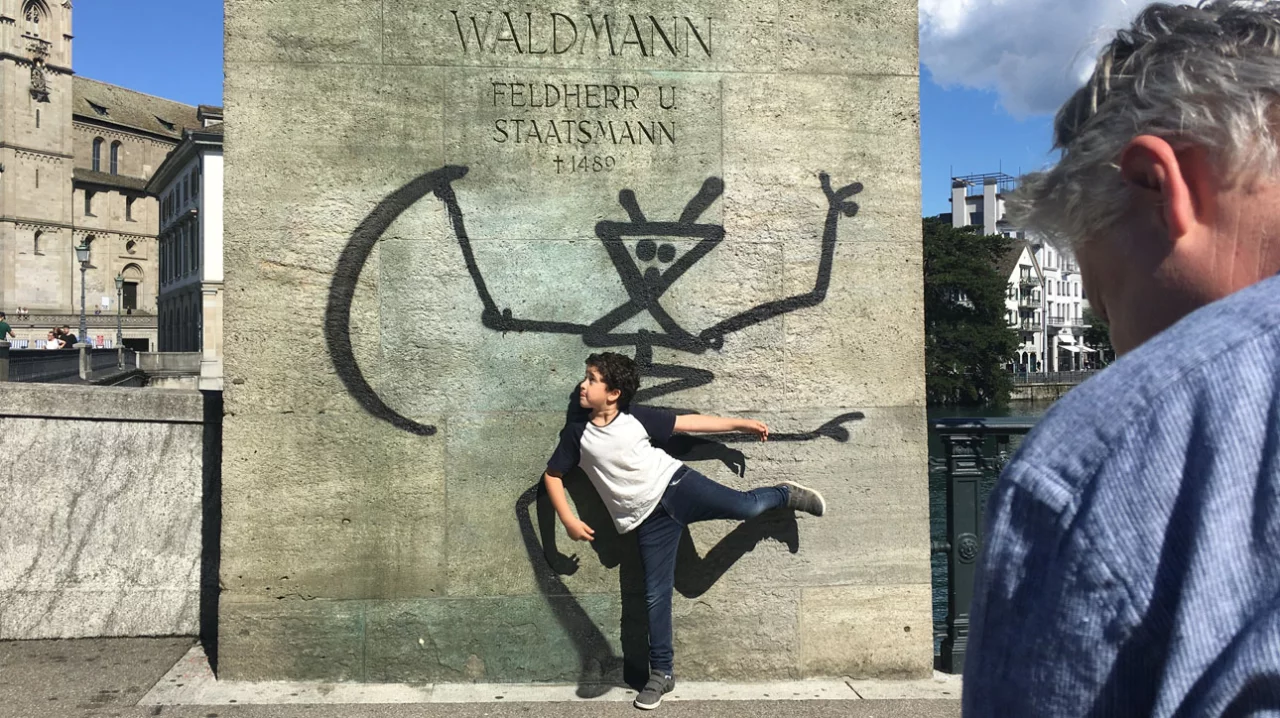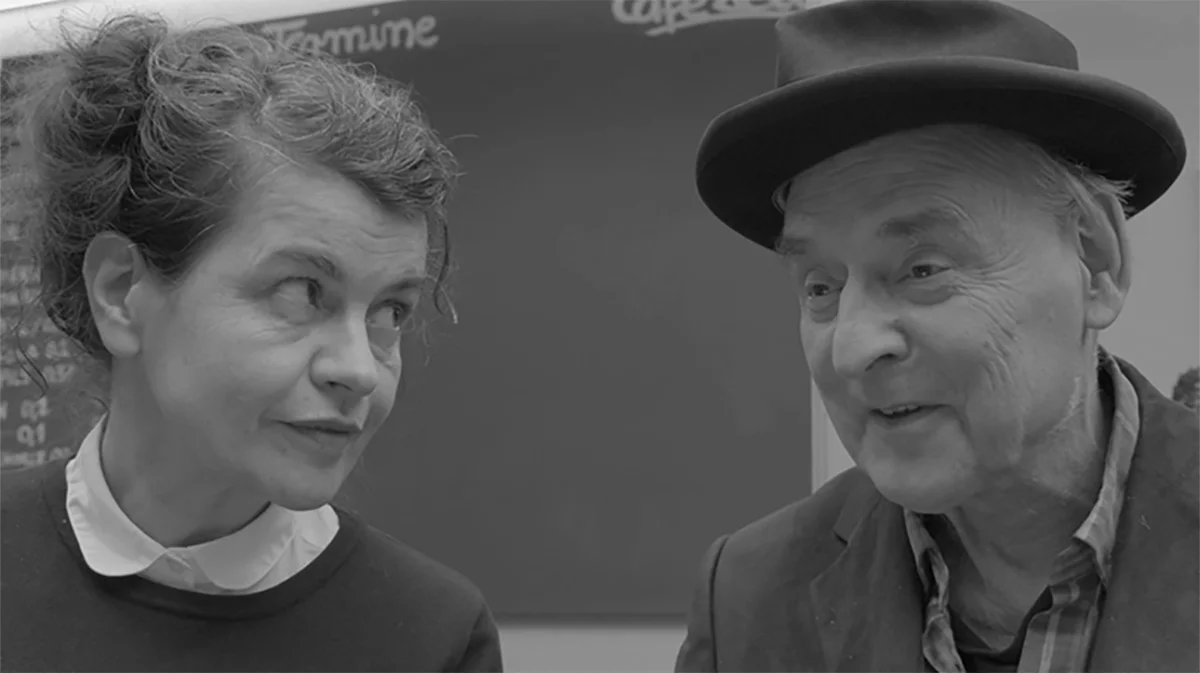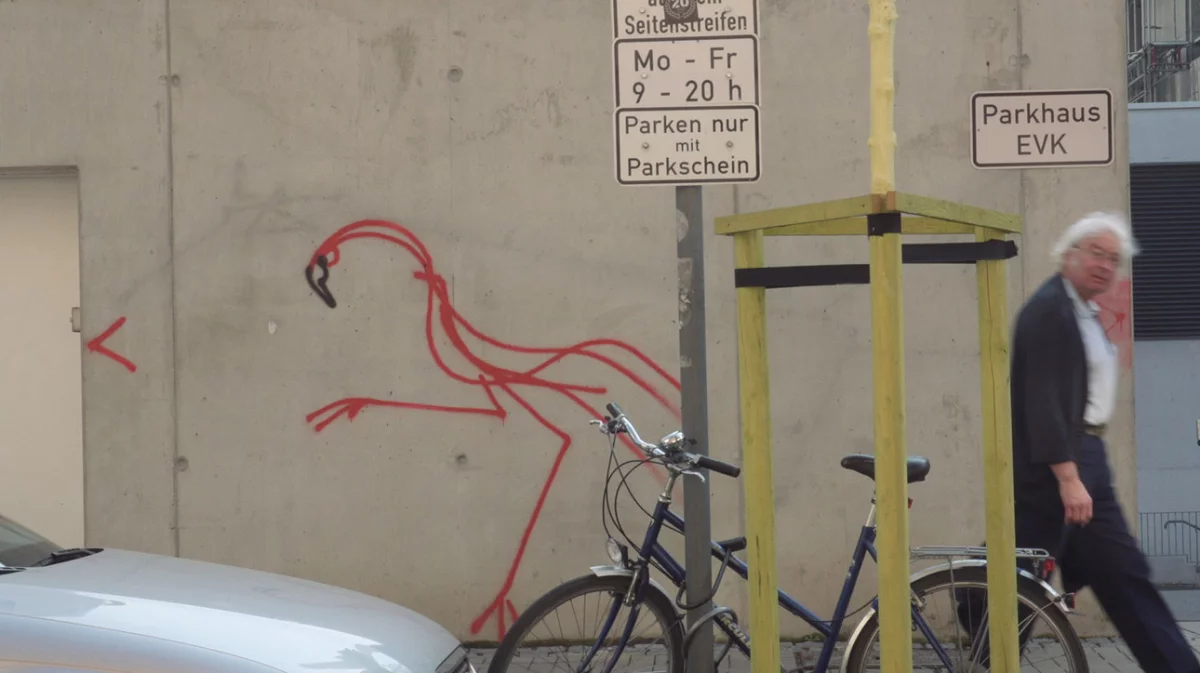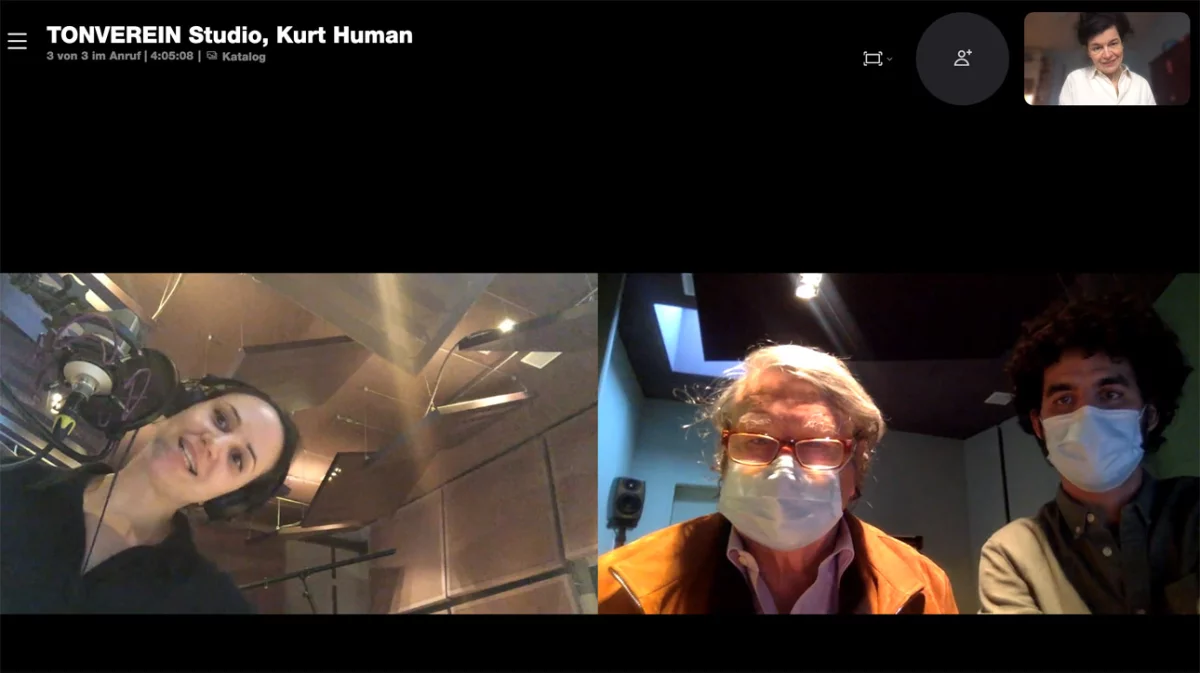
The last dance of death
29.09.2021 | A Hamburg woman on the trail of the Zurich sprayer

This year, a documentary about Zurich's most famous sprayer is celebrating its German premiere at Filmfest Hamburg. In "Harald Naegeli - der Sprayer von Zürich", Hamburg filmmaker Nathalie David follows the Swiss artist and utopian through his creative period and paints a portrait of a fascinating free spirit in the last phase of his life.
First a meal at a Vietnamese restaurant, then a mutual sign - followed by an interview. This is how many of the meetings between Nathalie David and Harald Naegeli went in Düsseldorf in 2019. David is a filmmaker and artist from Hamburg, while Naegeli has been Zurich's best-known sprayer for several decades, and is now 81 years old. A colourful personality between art and property damage. A rebel and utopian. In short: someone who is more than worth making a Documentary about.

The sprayer from Zurich was a stranger to Nathalie David for a long time. She met Swiss Executive Producer Peter Spoerri in a roundabout way many years ago. In 2018, the two met again at Filmfest Hamburg - and Spoerri told her about the idea of making a documentary about Harald Naegeli. "I immediately found the idea exciting, as Naegeli was not just a sprayer, but an artist with many pencil, charcoal and ink works. And a real utopian! Peter had been cutting out and collecting articles about him since 1979. So there was plenty of material," says Nathalie David. But the film project got off to a bumpy start. Naegeli turned down a corresponding request from David, as he was in poor health and no longer wanted to appear in a film at his age. But she persevered and wrote the next enquiry not as a filmmaker, but as an artist. An approach that seemed to appeal to Naegeli. He agreed and a short time later the interviews began in Düsseldorf. The city was his self-imposed exile for 35 years. In Switzerland, there were various proceedings against him for damage to property - and many people simply didn't take kindly to him.

From March 2019, David travelled to Düsseldorf several times for two to three days at a time and spoke to Naegeli in his studio. About his life, his art, his convictions and, last but not least, about death. The "Dance of Death" is one of his most famous pieces of graffiti. Minimalist, with just a few strokes. But no less powerful for that. A dancing skeleton that he sprayed numerous times on building facades in Switzerland. But since he fell ill with cancer, death knocked louder and louder on his door: "Our interviews usually lasted about three hours. But it could also happen that he was already too tired after an hour and went to sleep in between," reveals David. She always visited Naegeli alone in Düsseldorf and was able to build up trust with him bit by bit. At some point, she was even allowed to stay and film in his studio without his presence. She took her time and adapted to his rhythm. "We drew each other before almost every conversation and talked about art topics. It was a ritual to get into the conversation," says David. In 2020, the Zurich sprayer decided to spend the rest of his time in his home country and returned to the Swiss capital. And so Nathalie David had the opportunity to film him together with Director of Photography Adrian Stähli where it all began.

The film shows many of his works in the streets of Zurich and Düsseldorf. Skeletons, flamingos, abstract line drawings. It shows Naegeli meeting up with old companions. It shows him at work as an artist. And it allows us to immerse ourselves in the thoughts of the political action artist. "It was fascinating to accompany a free spirit like Harald Naegeli for a while. He does what he wants and takes his time to do it. I missed that in myself for a long time and finally rediscovered it through the film," reveals David. And so during Corona, she also took a lot of time to edit the film, which consists of interviews, archive material, fade-ins and voice-overs. In addition to Adrina Bollinger, who also acts as the voice-over, David was able to engage Swiss music star Sophie Hunger for the accompanying music. Even though she didn't have high hopes for a collaboration at the beginning, Hunger composed and sang the title track "Die Ballade vom Sprayer" after a meeting in Berlin. "Sophie knew Naegeli through her parents, who had already supported Naegeli and his attitude back then. And so it didn't take long to get her on board for the project," says David happily.


Is "Harald Naegeli - Der Sprayer von Zürich" actually a political film? Naegeli fought against capitalism all his life, which is of course also addressed in the film. And where damage to property begins and art ends is a question that probably cannot be answered conclusively. But how this is dealt with sometimes leaves the viewer and Nathalie David perplexed: "The fact that an artist is put in a high-security prison because of his art - and that in 1984 - was very shocking to me. We are not in Iran or Algeria, but in the centre of Europe. That says a lot about Switzerland at the time and I also understand why women weren't allowed to vote until 1990," says David. She is glad that her film itself is a political statement. A statement that everyone should have seen.
Official trailer

more articles





.jpg?fit=max&w=800&h=1080&q=90&fm=webp)

